In my Images on this website, the category “Icons” pulls up a collection of meditative symbols that have moved my expression, and to me they still speak. Employing various media from collographs to monotype, from drawings to collage, are suggestions of themes which are universal as well as biblical. Each of these works, as a stand-alone visual, is an offering toward the pondering of ultimate things that matter. If the images intrigue, titles may suggest further. And in future posts I may elaborate on a couple more of these with some detail.
So this month, I want to highlight the predicament of one troubled sage. It’s a true story of how unbelievers were moved to trust the true God in contrast to the dismal character of His prophet.
Jonah’s story is found in the Hebrew Tanakh, in the last portion labeled “The Writings”. In the Christian grouping of the same writings. Jonah is called one of the “minor prophets”. He lived and labored in the 8th c. BCE . Anyone can learn much through his struggle. Even the Quran takes lesson from the tale of this Hebrew. His is a short 4-chapter drama, worth your read.
The single image I drew from Jonah is the tension left unresolved at the end of his story. Jonah himself is long gone from earth, and what he did in response to God’s words and God’s obvious compassion is unknown to us. Yet his quandary — which mirrors so much of real life — can be a rich mine for so much more. Jonah leaves us as he broods, sitting under the meagre shade from a wilting gourd vine, having to decide what he’s going to do with what God has said to him. Herein lies the crux of the whole matter inside his own sulking heart.
Jonah’s problem is as current as today’s news. In fact, I read this week in The Times of Israel, writer David Horowitz’ description of their current situation: “I get the sense of time stopping, of a fateful moment — a balance that can swing either way, in the Old City and beyond”.
My work here, aims at that same pregnant tension. I titled it “A Vehement East Wind” taken from words in the 8th verse of Jonah’s 4th chapter.
An east wind is an unusual shift in the natural order. Normally winds and weather approach us from our West. The reason for this is that the earth we stand on has an axis, rotating rapidly from what we call east into west from any point on the globe. Like the trails that slide over the hood of a moving car, the atmosphere meets and moves contra the direction we’re traveling. But east winds are a strange and often violent reversal, almost like an ambush coming from behind. And biblically, east winds portend danger. Isaiah said “Thou dost contend with them…with His fierce wind He has expelled on the day of the east wind.” Job agrees “The east wind carries him away…for it whirls him away from his place.” Drought is indicated by Hosea’s east wind (13:15), and Ezekiel’s as well (17:10).
So when Jonah, late in the day of his return to God’s business, finds himself insulted by an east wind, we know this is not a gentle eastern breeze but rather a sign of significant trouble.
You might empathize with the man. He tried to ignore God but that proved mercifully impossible.
In all this, I was moved to tears, and moved again even as I re-read Jonah’s account today. For God cares more for pagans than we do; and He knows how to get their attention. And in the harder end, He speaks into our angry hearts, quietly awaiting our own response! There is beauty in the wilting gourd, if only Jonah could see it. The poet John Moriarty says of his own coming to clarity that it was like being “shattered into seeing”.
In my image, it’s like a still shot in this moving drama. What am I going to do with God’s words and with His heart?
This piece was selected and now hangs in my United States’ Congresswoman’s office.
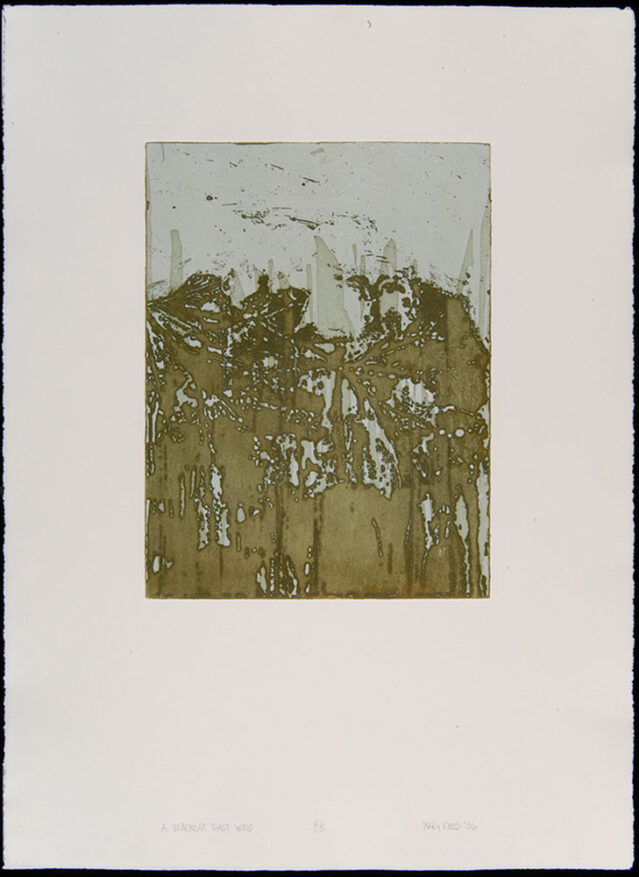
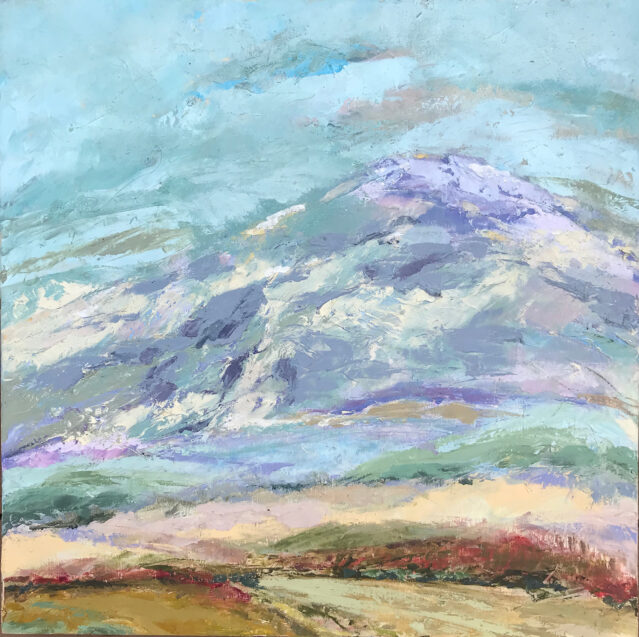
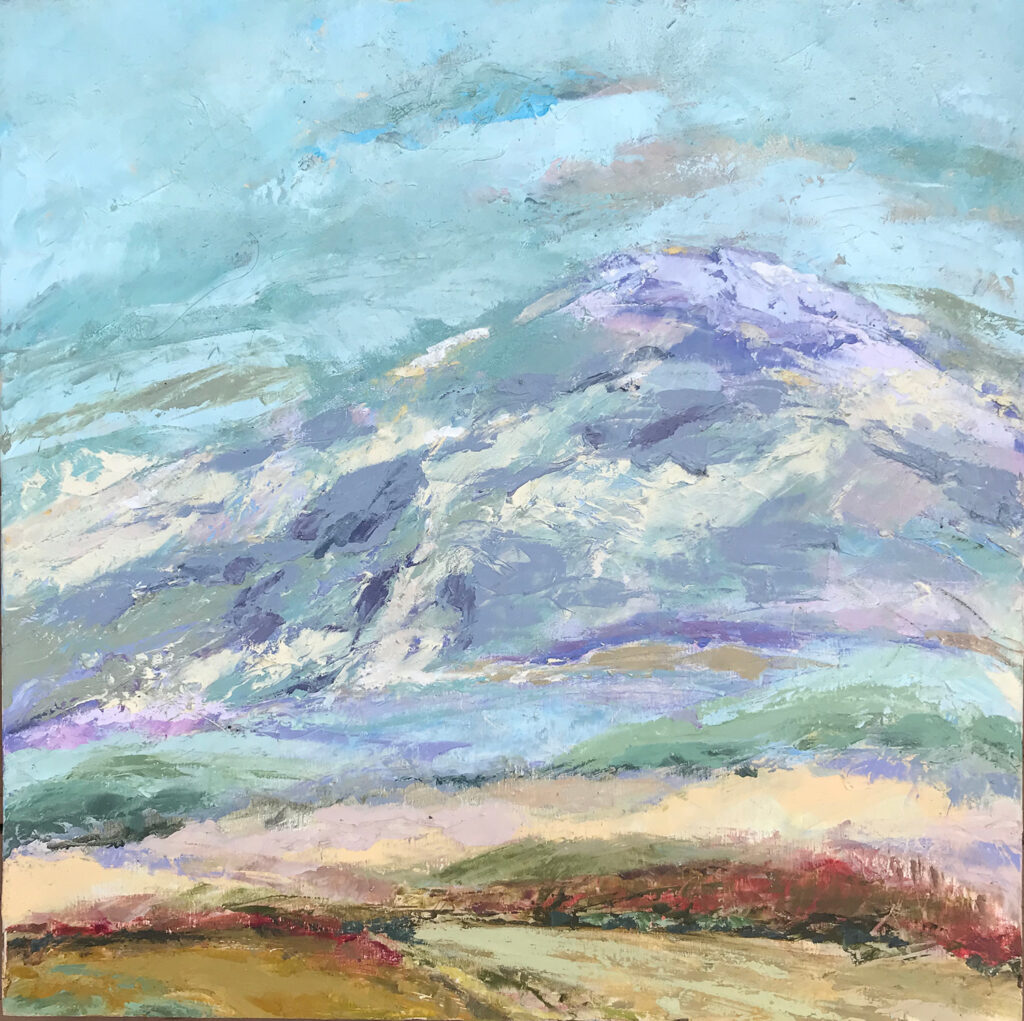
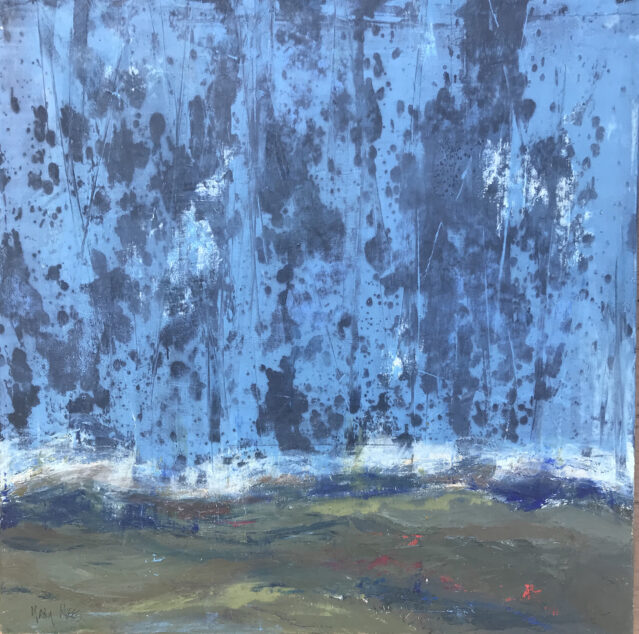
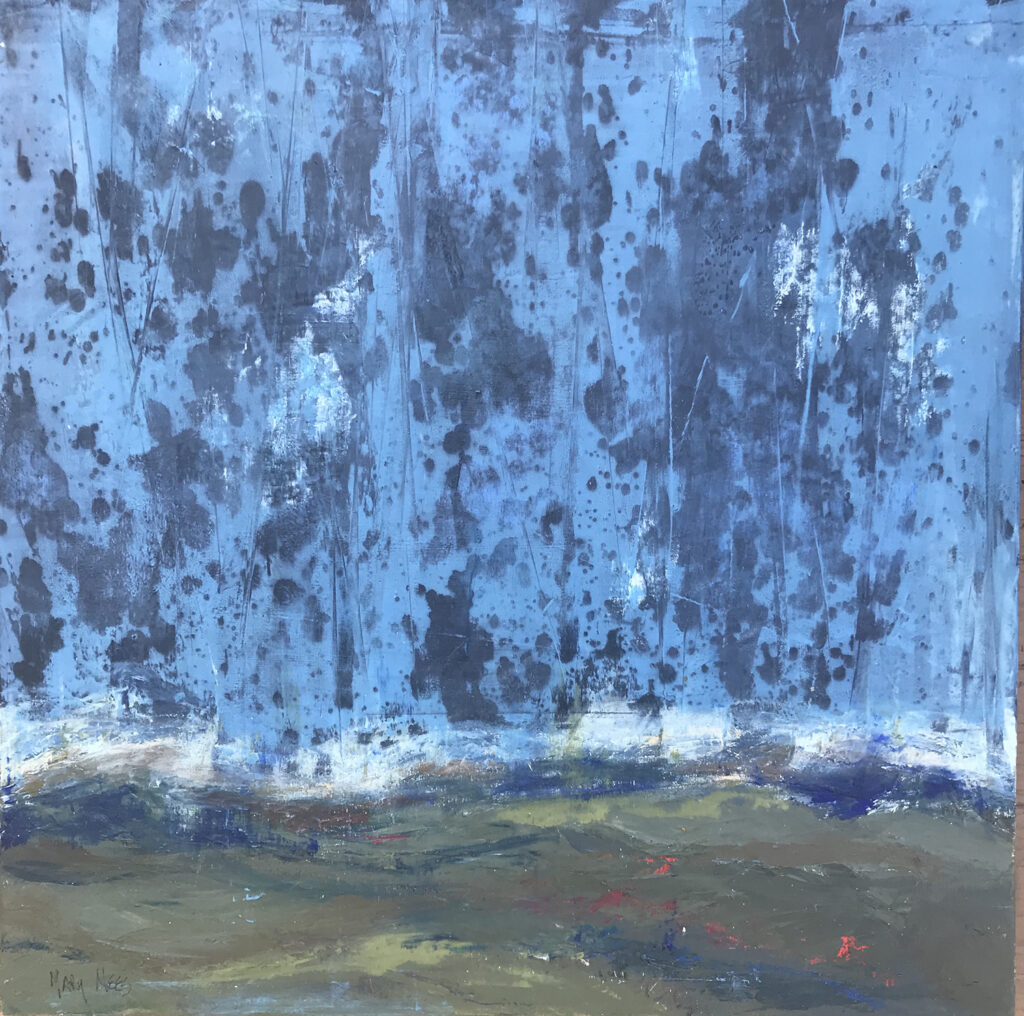

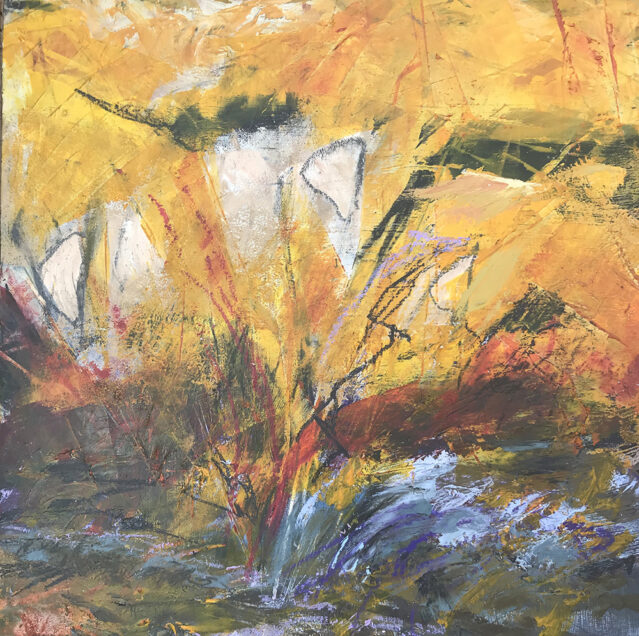
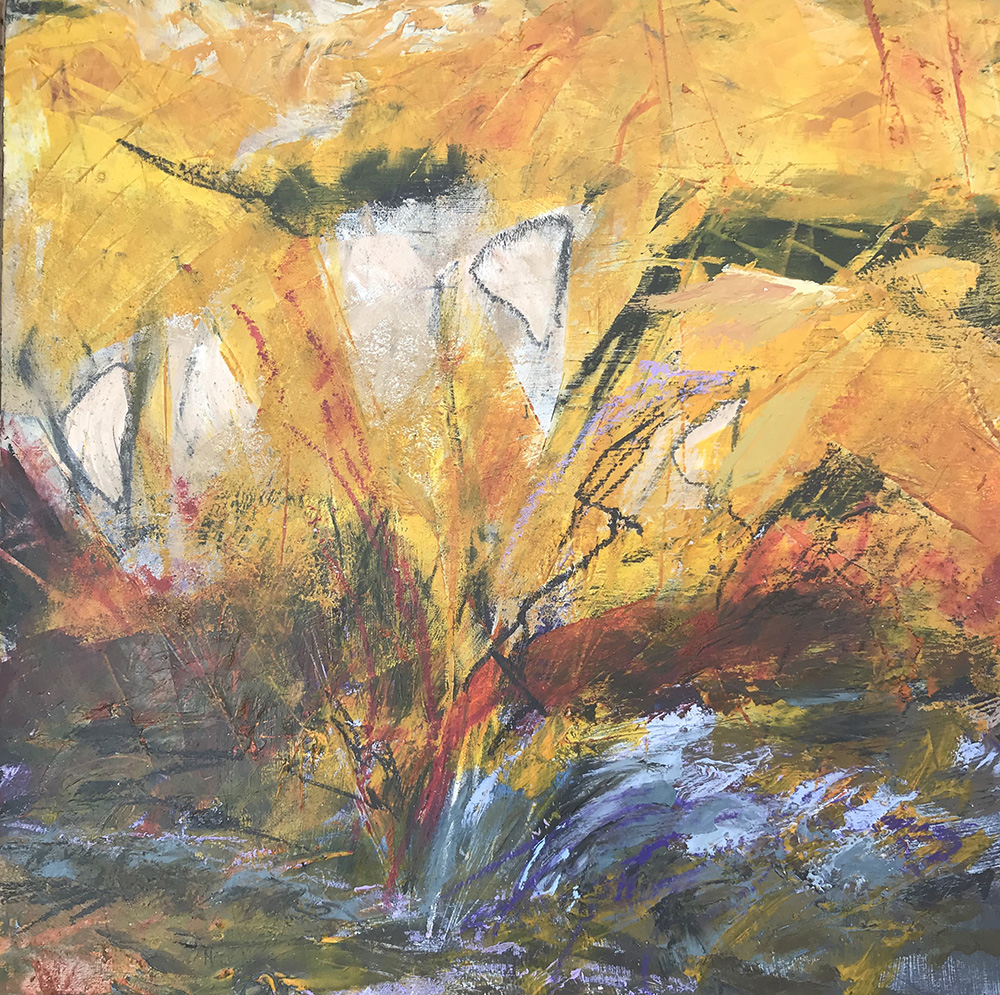
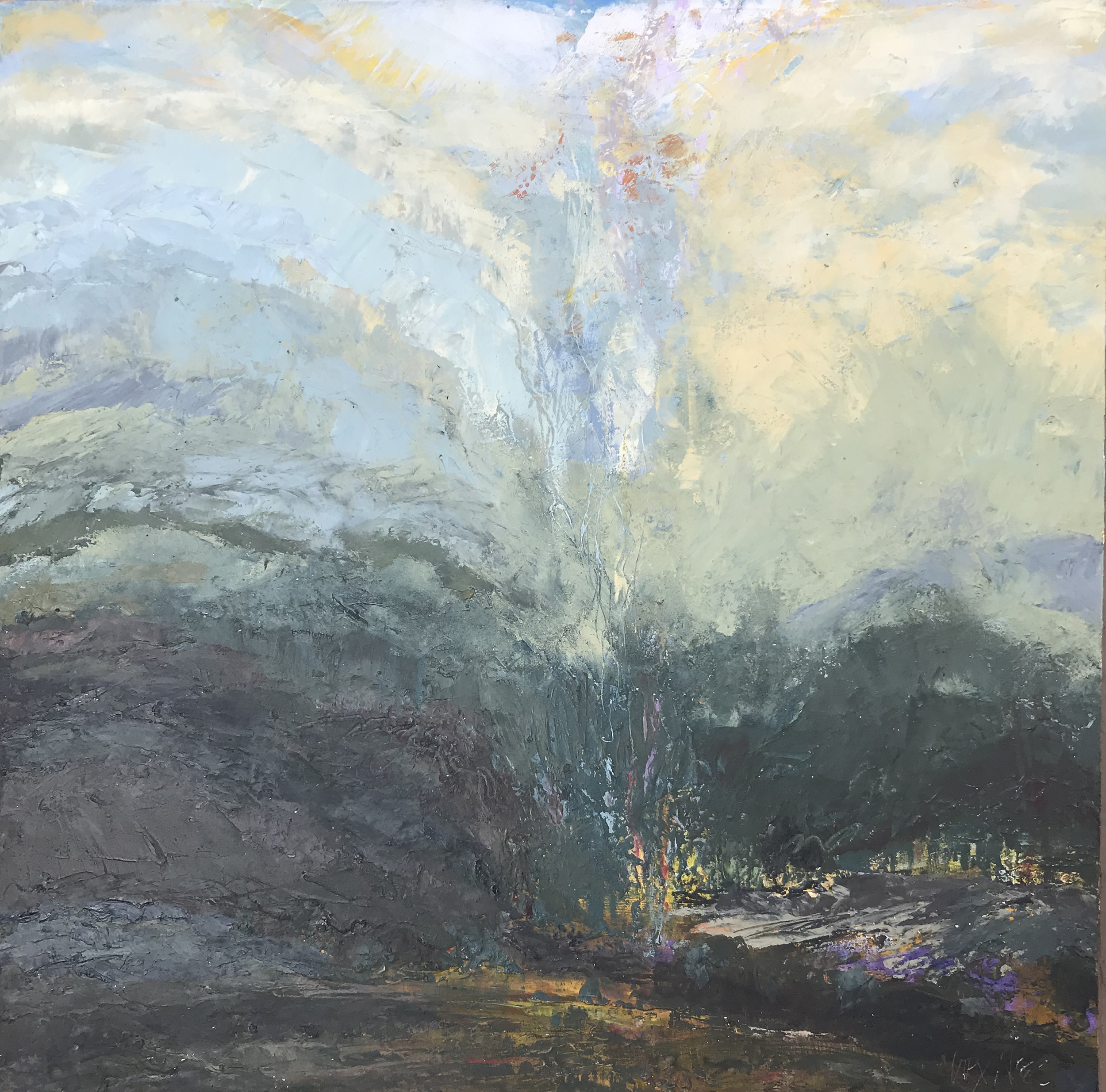
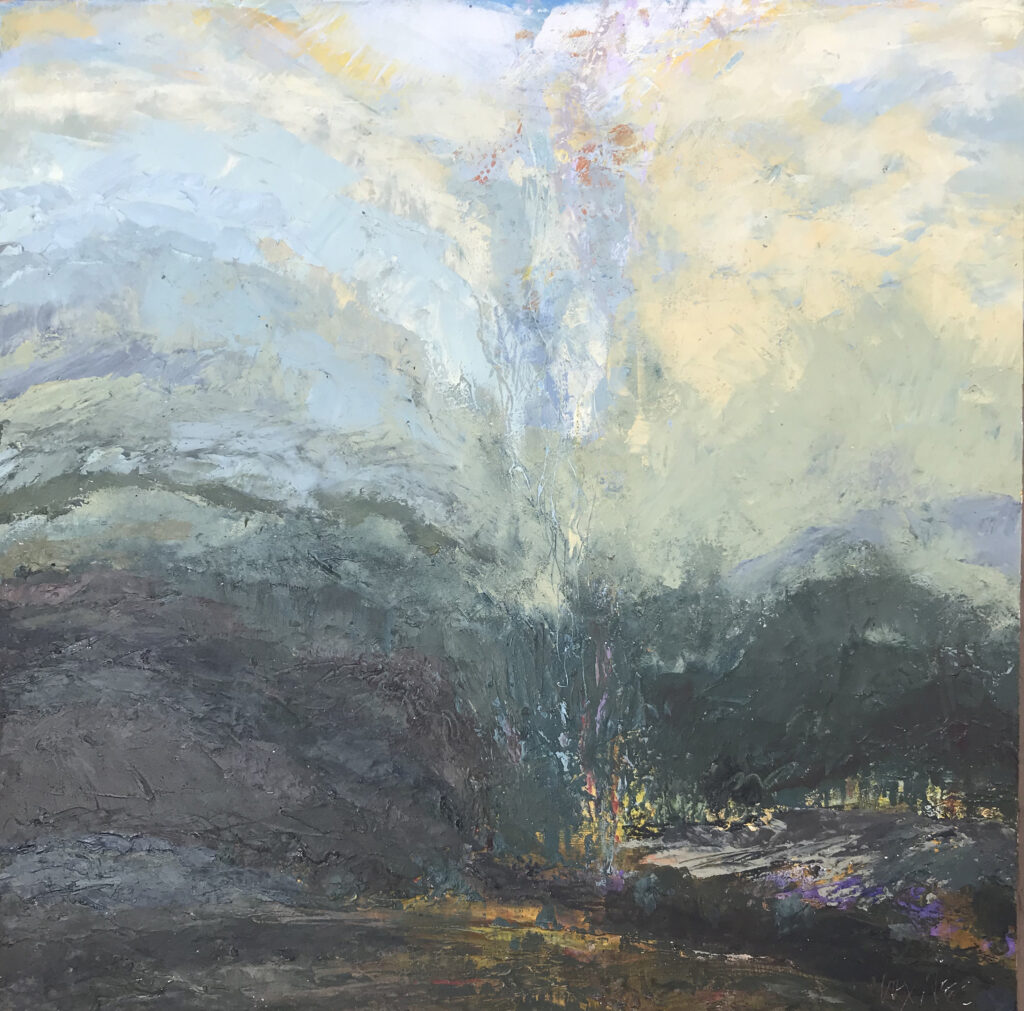

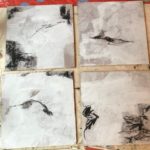

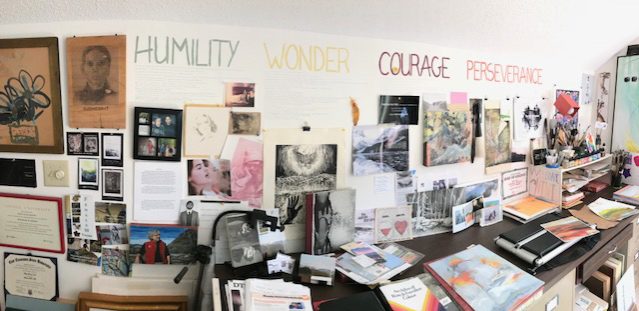
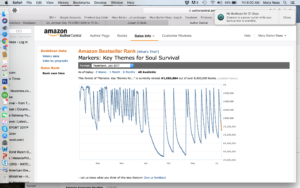 Today is the 1st year anniversary of my
Today is the 1st year anniversary of my  It is an earnest and deep-seated Wonder before the biggest matters that keeps me working. It is needed Humility that keeps me fit. And beyond my own natural chutzpa there is a Courage I count on and ask for from the Spirit who made the world, who made me. Perseverance is the last bit I have to own, and own again. (These 4 aspects–I gleaned out of the Creation account in Genesis–are a sort of working prescription; that’s why they are written big, with growing notes on my studio wall).
It is an earnest and deep-seated Wonder before the biggest matters that keeps me working. It is needed Humility that keeps me fit. And beyond my own natural chutzpa there is a Courage I count on and ask for from the Spirit who made the world, who made me. Perseverance is the last bit I have to own, and own again. (These 4 aspects–I gleaned out of the Creation account in Genesis–are a sort of working prescription; that’s why they are written big, with growing notes on my studio wall).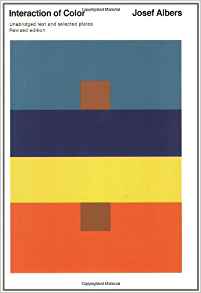 The mid 20th century Bauhaus instructor Joseph Albers was a master at helping his art students understand this. Using color chips and simple exercises, like “make five colors into six”, they learned the relativity of color. “In order to use color effectively, it is necessary to recognize that color deceives continually”, Albers said. Here is one exercise exampled. The brown squares are the same exact hue, but the reading of each is influenced by its surrounding colors. A dark context makes the center color lighter, a cool context makes the center color warmer and vice versa.
The mid 20th century Bauhaus instructor Joseph Albers was a master at helping his art students understand this. Using color chips and simple exercises, like “make five colors into six”, they learned the relativity of color. “In order to use color effectively, it is necessary to recognize that color deceives continually”, Albers said. Here is one exercise exampled. The brown squares are the same exact hue, but the reading of each is influenced by its surrounding colors. A dark context makes the center color lighter, a cool context makes the center color warmer and vice versa.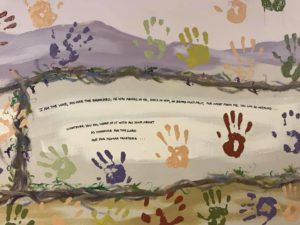
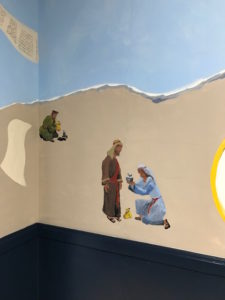 .
.
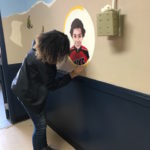
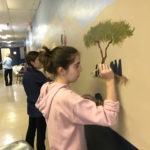

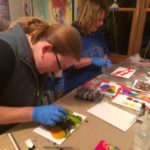
 Voila, or “There it is!” was the result after a couple hours of experimentation. We really are creative whether we understand how we’re made or not. The excitement in getting a glimpse of that is contagious. This finished result was just one of several little gems made that night. Liz illuminated a favorite quote from Brenda Ueland’s “If You Want to Write”: “Since you are like no other being ever created since the beginning of time, you are incomparable.”
Voila, or “There it is!” was the result after a couple hours of experimentation. We really are creative whether we understand how we’re made or not. The excitement in getting a glimpse of that is contagious. This finished result was just one of several little gems made that night. Liz illuminated a favorite quote from Brenda Ueland’s “If You Want to Write”: “Since you are like no other being ever created since the beginning of time, you are incomparable.”